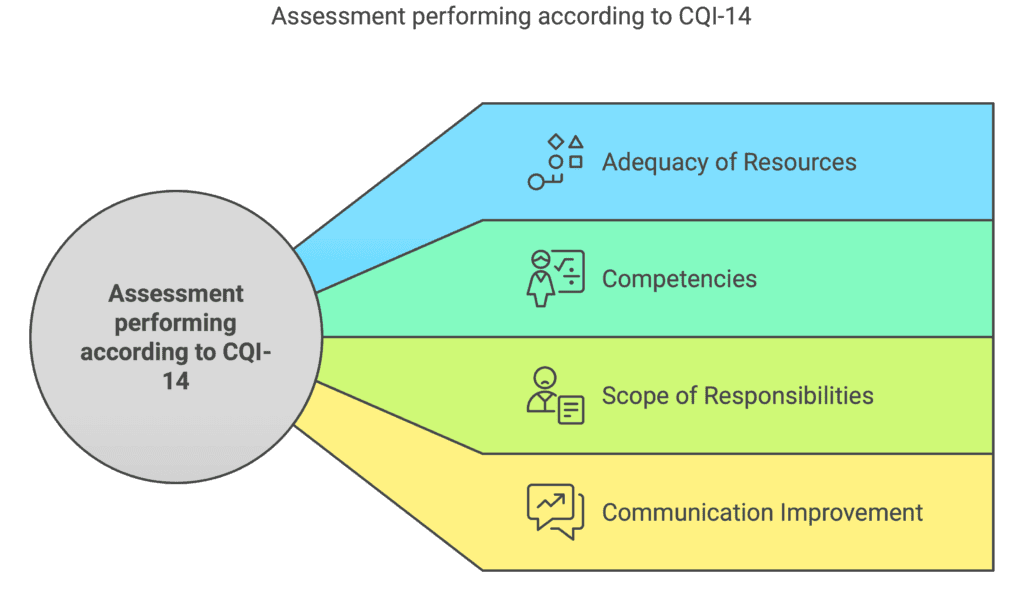CQI-14, also known as industry best practice guidelines, aim to promote the development of customer satisfaction and continuous improvement of the warranty management program by reducing associated risks and, consequently, decreasing the number of incidents/warranty returns.
The CQI-14 guidelines encompass references to current technologies currently utilized in the automotive industry – including software change management, vehicle telematics, and advanced analytics – along with steps that partner organizations can take to proactively approach minimizing market returns.
To meet the requirements of the IATF 16949:2016 standard related to the management of the returns analysis process, we can identify the following criteria:
8.5.5.1. Feedback of information from service
This requirement can be interpreted as the necessity of having a process for conveying information from the service regarding the components under complaint, which we, as the manufacturer, produce. This communication should be provided to all parties concerned with the particular report and should encompass not only the production area but also departments such as R&D, technology, SCM, and logistics.
Additionally, including data concerning the origin of the non-conformity in the supply chain (0km or from the warranty field) is important. This information enhances the understanding of the root cause of the issue and aids in implementing effective corrective measures.
8.5.5.2. Service agreement with customer
As manufacturers of products supplied to OEMs, we should have the ability to verify how repairs, warranty exchanges are carried out in authorized service centers. Are dedicated equipment or service tools used? Do repairs, exchanges proceed based on our standards in this regard (instructions, specifications)? What qualifications does the personnel have – knowledge and skills?
10.2.5. Warranty management systems
Depending on the length of the warranty we provide as manufacturers for the products we supply, we should ensure proper handling of warranty returns. Therefore, the organization can carry it out for periods ranging from 2 to even 30 years (e.g., corrosion resistance of sheet metal body elements).
Thus, this process should include the NTF procedure. This involves dealing with parts that, after analysis by the vehicle manufacturer or supplier, meet all the requirements of a “good part.”
Additionally, what is most important in interpreting the IATF standard is a strong reference to customer requirements in this area. Therefore, we should consider whether to carry out the market return analysis based on the requirements of the VDA FFA reference manual or AIAG CQI-14.
10.2.6. Customer complaints and field failure test analysis
Each returned part should undergo warranty return analysis. Of course, we can take into account risk assessment regarding known, recurring defects here. Thereby reducing the number of analyses conducted. Nevertheless, the organization should execute the entire process through an effective problem-solving approach.
Implementing the CQI-14 reference manual brings several benefits
Given the requirements of the IATF standard, the focus should be on answering the “WHAT” question. For addressing the “HOW” question regarding the market return analysis process, the CQI-14 guide comes into play.
One key practice highlighted in the manual is following the PDCA model for continuous improvement. This approach should be integrated into the work of interdisciplinary teams, involving the identification of root causes of errors using various quality tools, implementation of corrective actions, and ongoing evaluation.
Based on risk assessment, the organization should also implement results for similar products or their entire families.
Practically the entire organization assigns ownership of the process. The organization should properly define and communicate roles and responsibilities in this regard. The organization should ensure it provides resources to comply with CQI-14.
Additionally, the organization should establish annual goals for warranty return analysis. These goals may include quantities, costs, analysis time, etc. Key performance indicators (KPIs) should be established to assess the effectiveness and efficiency of the process, along with conducting evaluations during Management Review.
We are initiating the implementation of the CQI-14 requirements
One of the few “hard” requirements is the necessity of conducting a self-assessment of the warranty return analysis process. To perform the assessment, you should use a form in the form of an Excel table. The Pre-Assessment / Gap Analysis includes an evaluation that can be conducted for new projects or after changes have been made.
Its purpose is to identify gaps (warranty strategy, risk assessment, resources, competencies, goals) in the process carried out in the organization compared to best practices according to CQI-14.

The next step is conducting the target Assessment. It will aim to establish:
– Adequacy of available resources,
– Competencies,
– Scope of the organization’s responsibility regarding warranty returns management,
– Improvement of communication throughout the supply chain in terms of return management.
The aim is to confirm that the organization conducts the entire process in an interdisciplinary manner.
The process described in CQI-14 involves processing both warranty claims and the parts themselves. This process includes analysis that allows for the identification of problem causes and the development of corrective actions. It primarily encompasses “best practices” that customers can eventually expect from us as suppliers.
Therefore, it is worth incorporating the required approach into our processes, based on both continuous improvement (CI) and lessons learned. Why? To minimize the risk of returns and maximize customer and end-user satisfaction.
Literature:
1. CQI-14 Automotive Warranty Management: A Guideline for Industry Best Practices 4th edition
2. IATF 16949: 2016 Automotive Quality Management System Standard – edition 01.10.2016


